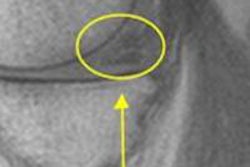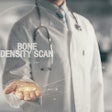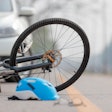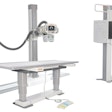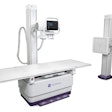VANCOUVER - Radiologists working at an Olympic Games don't have to hurl themselves down icy, twisting slopes. But they do have to be at the top of their game and use the best equipment to perform high volumes of imaging and diagnoses under pressure every day.
That's according to Dr. Bruce Forster, director of medical imaging during the Vancouver 2010 Winter Olympic and Paralympic Games, who offered up his experience from the games during a Friday presentation the Canadian Association of Radiologists (CAR) annual meeting.
Forster said his time at the Olympics was sometimes stressful but also "very inspiring."
"We had one patient, a Slovenian cross-country skier, who fell into a steep ravine during a training run, and who turned out to have a chest injury but insisted on competing in the medal round," said Forster, who in his day job is chair of the University of British Columbia's department of radiology. "I remember how important it was for her to go and represent her country. We were able to get her there, after a significant time spent caring for her injuries. And she ended up winning a bronze medal."
Forster led a volunteer team of 19 radiologists and 51 technologists, which included three imaging assistant supervisors -- Drs. Luck Louis, Mark Cresswell, and Karen Smith -- and an imaging assistant technical lead for on-venue ultrasound, Sue Murray.
The Winter Olympics have only one-third as many athletes as the Summer Olympics, but injuries at the winter games occur more frequently and are more severe, he explained. This became clear to the world when, on the first day of the Vancouver Olympics, a Georgian luger crashed and died. The luge track allowed speeds of up to 90 miles per hour, and the bobsled and skeleton competitions were held on portions of the same track.
To be prepared, Forster and his team first studied the radiology staffing and equipment deployed at the Torino 2006 Winter Olympics. They decided to copy the Torino approach of having a polyclinic at each venue for high-speed sports, with one each at the Whistler and Vancouver venues.
Each polyclinic had both a 16-slice CT scanner and an MRI magnet; CT scanners were not located at each site in Torino. In addition, the Vancouver Olympics polyclinics were equipped with one digital radiography (DR) unit and an ultrasound scanner with color-flow Doppler, with a RIS/PACS network tying everything together. The use of a RIS/PACS at each polyclinic -- a first in Olympic history -- allowed each athlete to receive a report and image within an hour of study completion.
The team also had to meet a requirement that is akin to the exigencies of an army combat zone.
"The International Olympic Committee requires you to be able to perform life-saving operations at the alpine venue -- if you can't do that, you might as well not bother applying to host the Winter Olympics," Forster said. "So we had a mobile medical unit -- it's an amazing facility with two operating rooms and an intensive care unit on wheels -- that we parked at Whistler. If someone needed to have their chest or their head opened, we had the capacity for that."
The mobile medical unit was equipped with an intraoperative x-ray unit with a C-arm, a DR system, and a portable ultrasound scanner.
Other imaging equipment arrayed at the Olympics included one DR unit and one portable C-arm for the hockey venues, and five portable or "field-of-play" ultrasound scanners. Each of these scanners was staffed by a technologist who relayed the images to the diagnostic imaging department at both polyclinics via a 1-Mb local area network.
"This was the first time ever that there was point-of-care imaging available to all athletes at an Olympics," Forster said.
During the course of the Olympics they performed 385 DR studies, 302 MR scans, 106 ultrasound scans, and 86 CT scans, for a total of 879 imaging studies. The Torino total was 567, and the total from the Salt Lake City Winter Olympics in 2002 was 394. By far the biggest increase was in CT exams, which leapt from four in Salt Lake City and two in Torino to 86 at the Vancouver games. The patients ranged from a curling competitor with a thumb injury to alpine skiing, hockey, and snowboard athletes with torn anterior cruciate ligaments or foot or ankle injuries.
"In my opinion, the team approach to patient care is exemplified by what we did at the Vancouver Olympics," Forster concluded. "And the radiologists are at the center of that team. This actually applies not only to Olympic athletes but to weekend warriors and everyone in between. A lot of important decisions relating to musculoskeletal injuries are made based on the imaging we provide."






